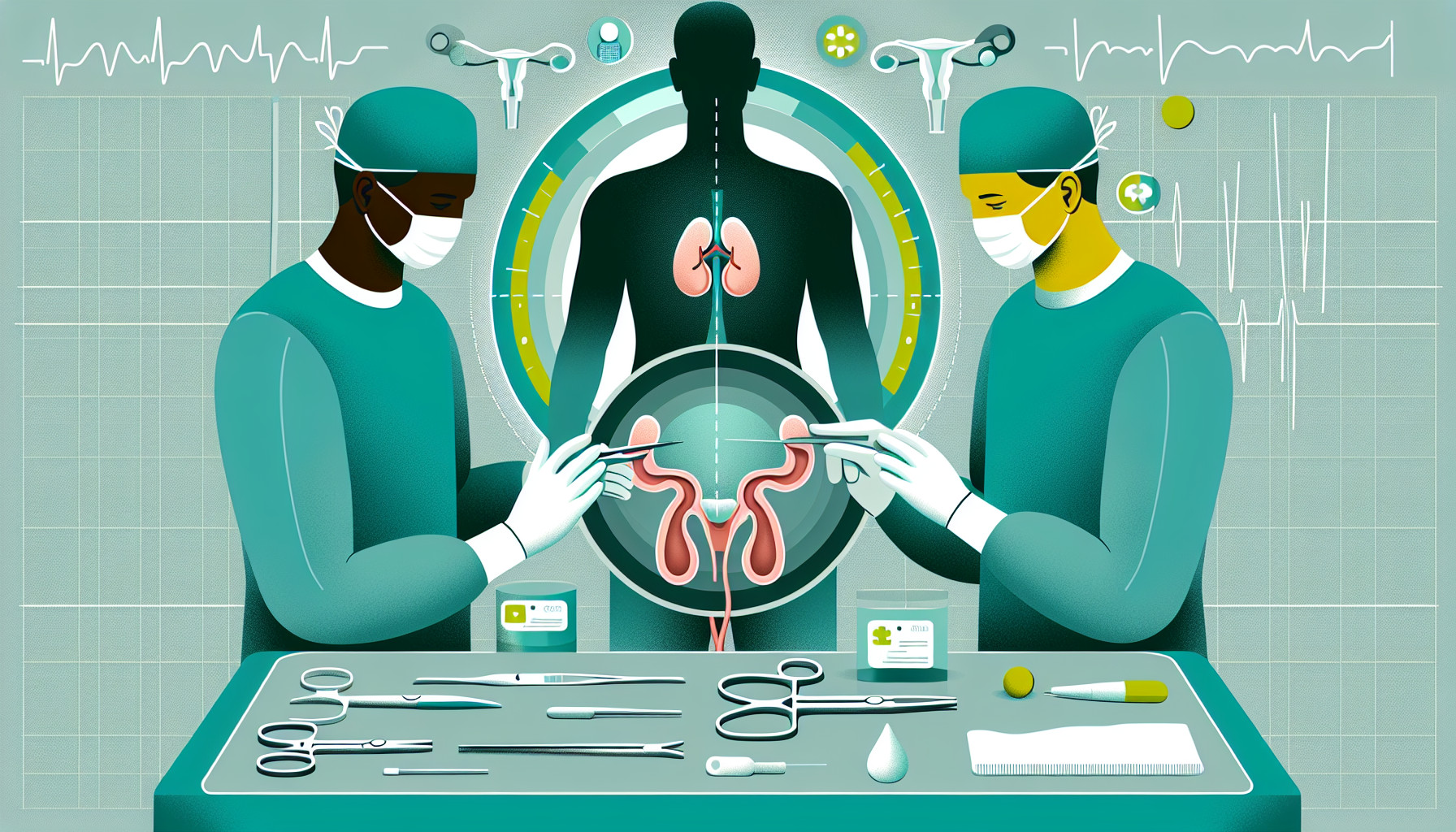Our Summary
This study aimed to understand how urinary incontinence (when a person cannot control their bladder) is treated globally after specific bladder surgeries. The researchers scoured 15 different databases for relevant studies conducted between 1979 and 2022. They found 16 papers that met their criteria.
In Eastern countries, the focus seems to be more on non-surgical treatments, while Western countries tend to pay more attention to surgical treatments. The studies considered various factors such as the failure of non-surgical treatments, how long after surgery other treatments were applied, and the different approaches for men and women.
The findings indicate that there is not enough evidence to guide the best practices for managing urinary incontinence. Non-surgical treatments often have limited effectiveness, while surgical treatments carry high risks and their effectiveness is uncertain. However, early behavior change and a mix of different treatments seem to have good results.
Urinary incontinence in patients with a neobladder (a replacement bladder made from a piece of intestine) is a challenging and distressing condition. It usually needs high-quality rehabilitation guidance and sometimes surgical intervention. The researchers suggest that more studies are needed to fill in the knowledge gaps and inform better treatment practices.
FAQs
- What is the main focus of treatment for urinary incontinence after radical cystectomy in Eastern and Western countries?
- What are some of the reported factors influencing the achievement of urinary incontinence in neobladder patients?
- What is the current recommendation for the treatment of urinary incontinence in neobladder patients?
Doctor’s Tip
A helpful tip a doctor might tell a patient about cystectomy is to follow post-operative rehabilitation and management recommendations closely to improve urinary incontinence outcomes. This may include participating in behavioural research and multimodal rehabilitation training to achieve better results. It is important to work closely with healthcare providers to address any issues or concerns related to urinary incontinence after surgery.
Suitable For
Patients who are typically recommended for cystectomy include those with bladder cancer that has invaded the muscle wall of the bladder, those with advanced or recurrent bladder cancer, and those with non-muscle invasive bladder cancer that has not responded to other treatments such as chemotherapy or radiation therapy. Other patients who may be recommended for cystectomy include those with severe bladder dysfunction or incontinence that cannot be managed with other treatments, or those with a history of chronic bladder infections or other bladder-related issues. Ultimately, the decision to recommend cystectomy is made on a case-by-case basis by a team of healthcare providers, taking into consideration the individual patient’s medical history, condition, and overall health.
Timeline
Before cystectomy:
- Patient is diagnosed with bladder cancer that requires radical cystectomy
- Patient undergoes pre-operative evaluation and preparation for surgery
- Patient may undergo chemotherapy or radiation therapy prior to surgery
- Patient may receive counseling and education about the procedure and potential complications
After cystectomy:
- Patient undergoes radical cystectomy surgery to remove the bladder
- Patient may have an orthotopic neobladder created to provide continence
- Patient experiences post-operative recovery and may require pain management and monitoring for complications
- Patient begins rehabilitation and incontinence management program, which may include conservative treatments such as pelvic floor exercises or surgical interventions
- Patient follows up with healthcare providers for monitoring and adjustment of incontinence management plan
- Patient may experience improvements in urinary incontinence over time with appropriate treatment and support.
What to Ask Your Doctor
- What are the potential risks and benefits of undergoing a cystectomy procedure?
- What is the likelihood of experiencing urinary incontinence after a cystectomy?
- What are the different treatment options available for managing urinary incontinence post-cystectomy?
- How effective are conservative treatments for urinary incontinence compared to surgical interventions?
- What is the typical recovery process like for patients undergoing cystectomy and experiencing urinary incontinence?
- Are there any specific factors that may increase the risk of developing urinary incontinence after a cystectomy?
- How important is rehabilitation and behavioural therapy in managing urinary incontinence post-cystectomy?
- What are the long-term implications of urinary incontinence following a cystectomy procedure?
- Are there any support groups or resources available for patients dealing with urinary incontinence after a cystectomy?
- What is the success rate of surgical interventions for treating urinary incontinence in patients with a neobladder?
Reference
Authors: Miao S, He Q, Zhang Y, Wang L, Jin X, Bao C, Wang W. Journal: Nurs Open. 2023 Oct;10(10):6618-6634. doi: 10.1002/nop2.1924. Epub 2023 Jul 5. PMID: 37408112
